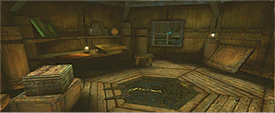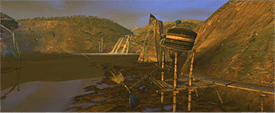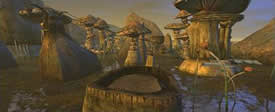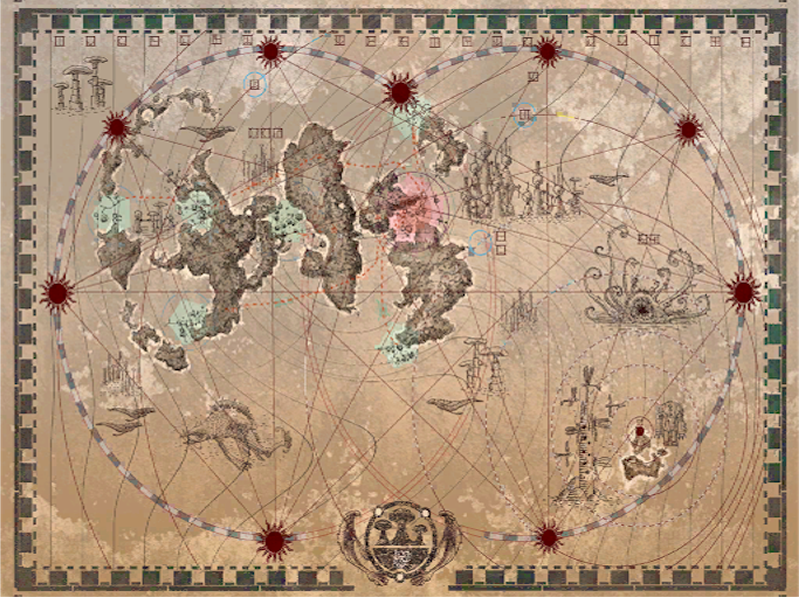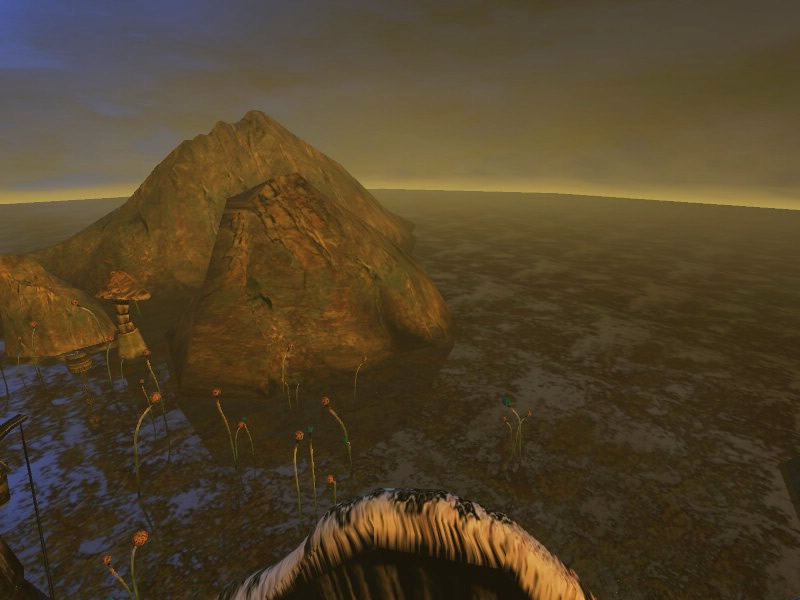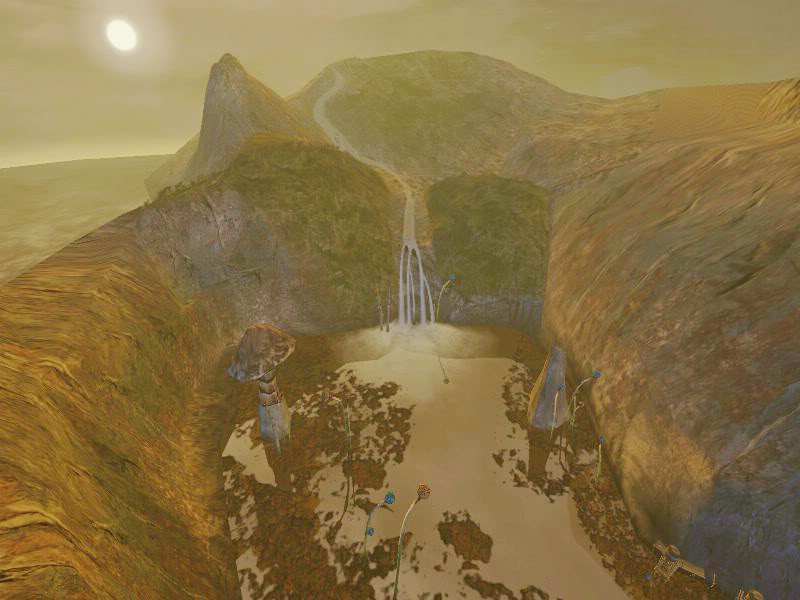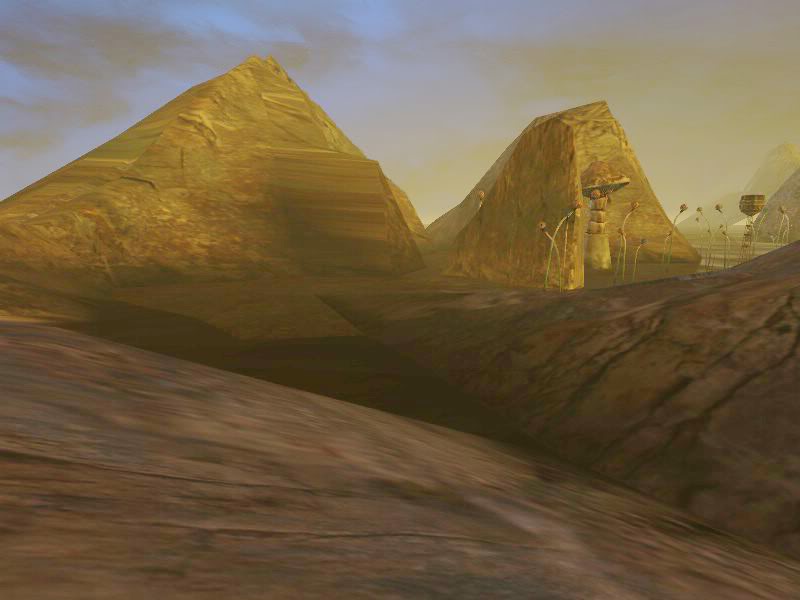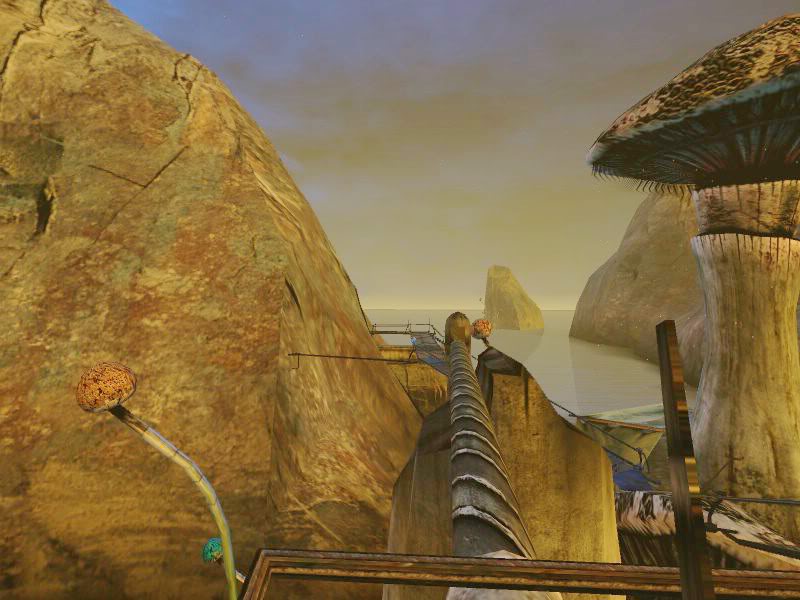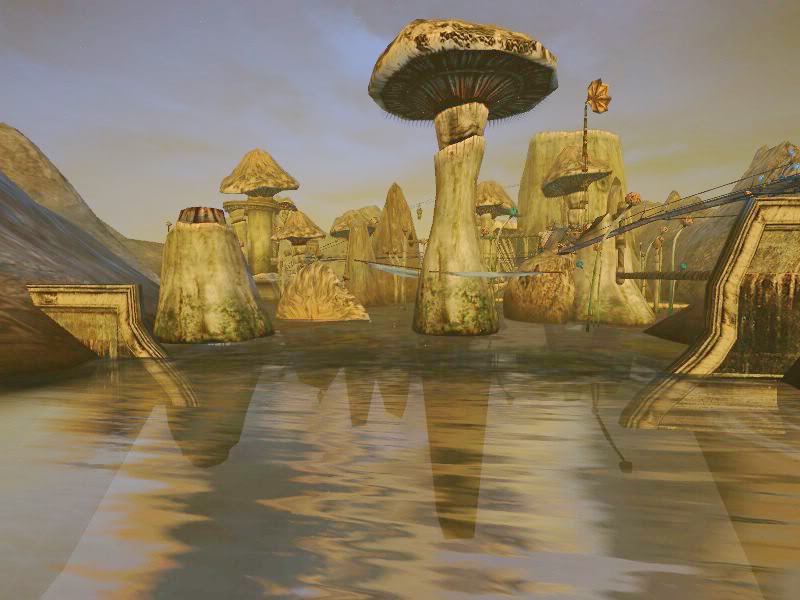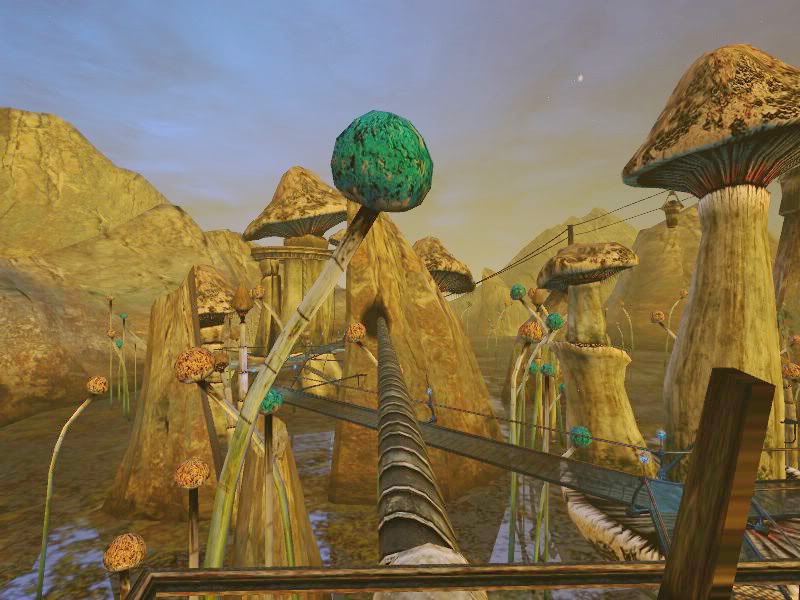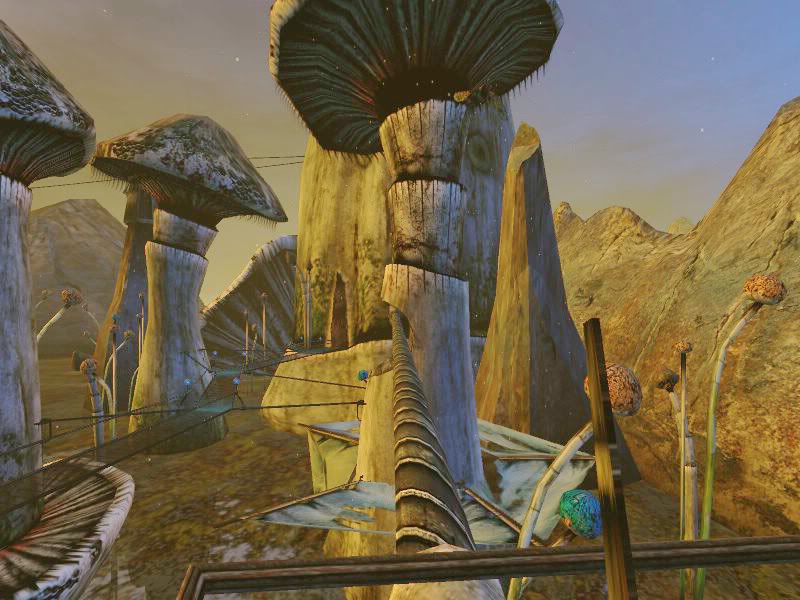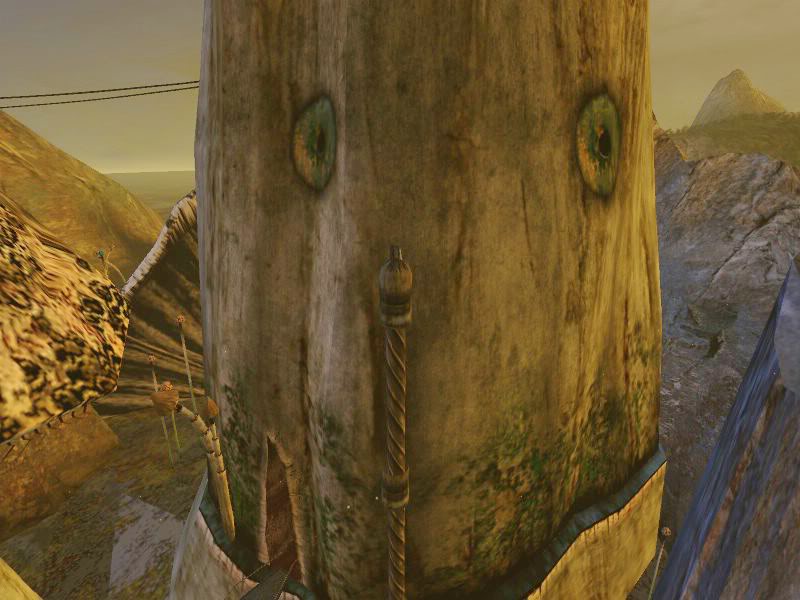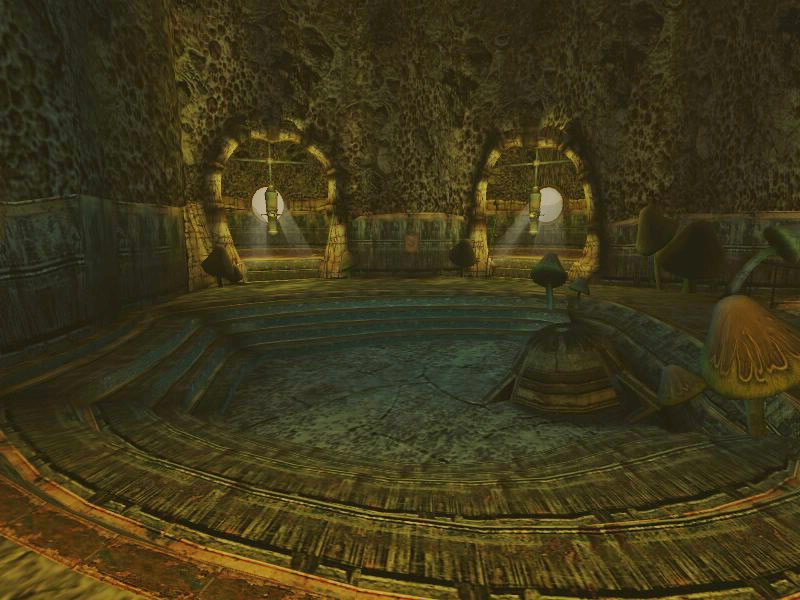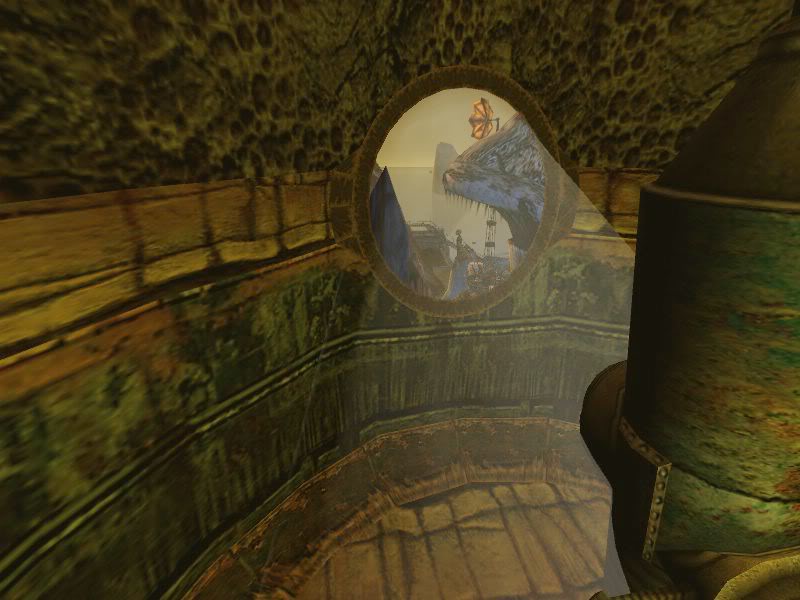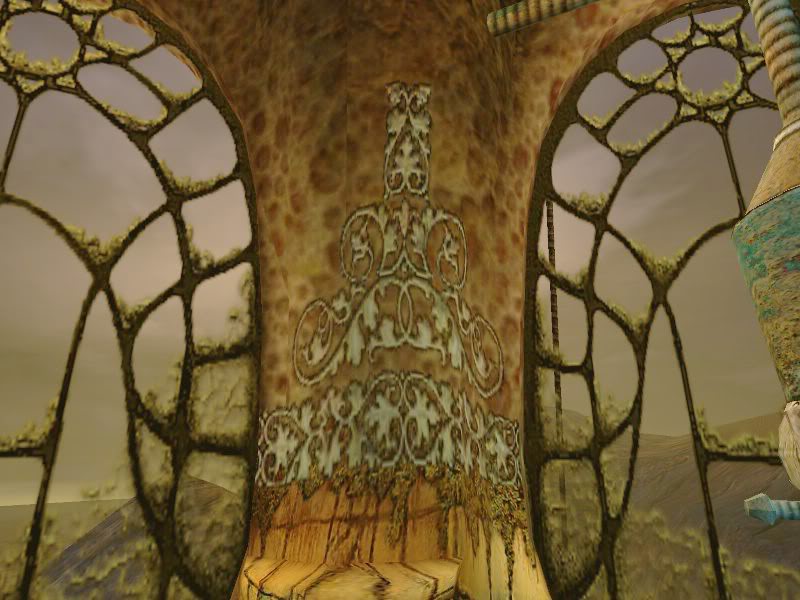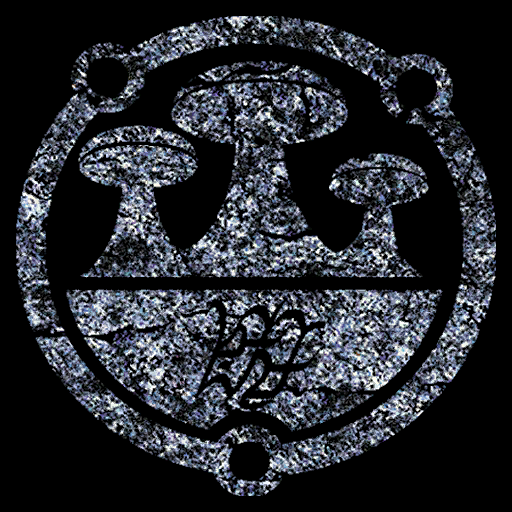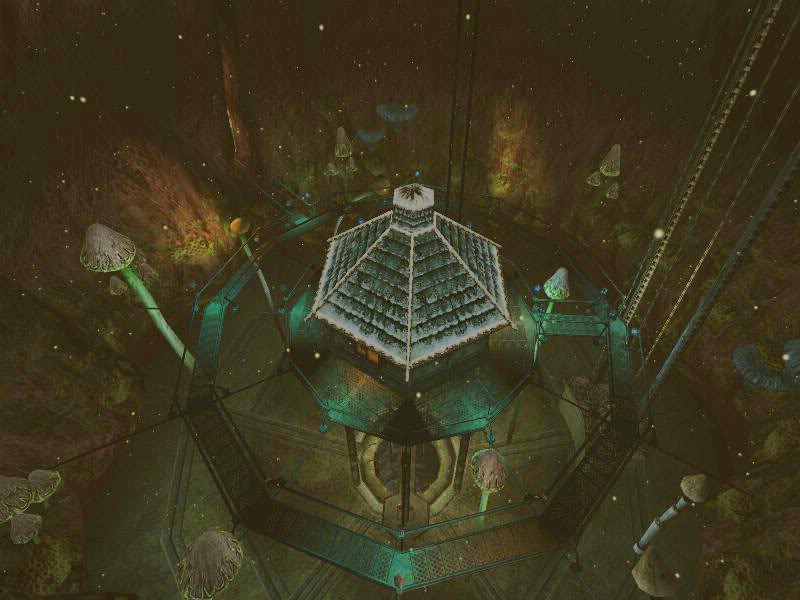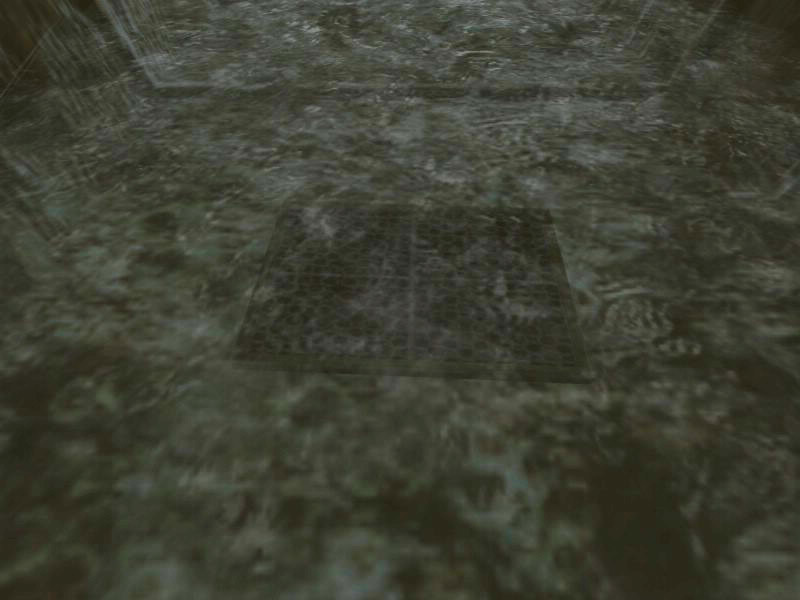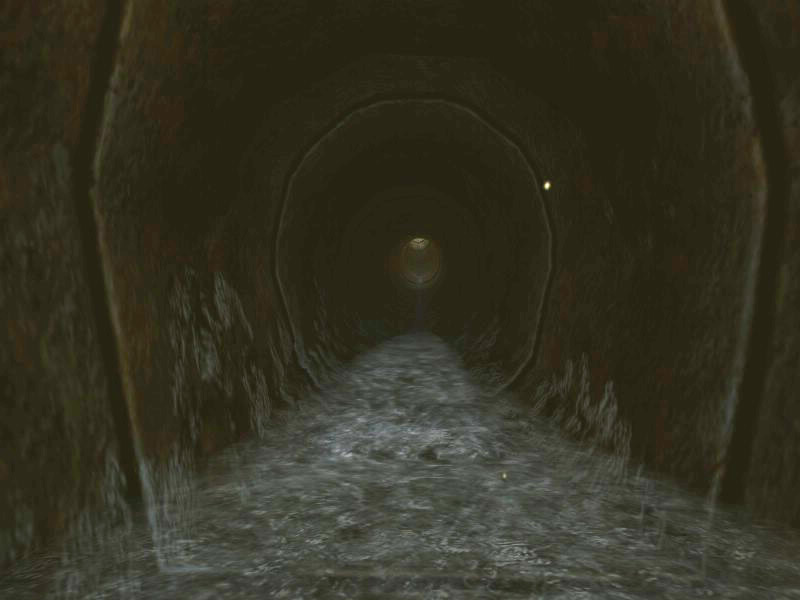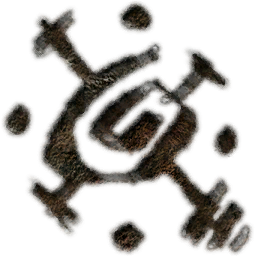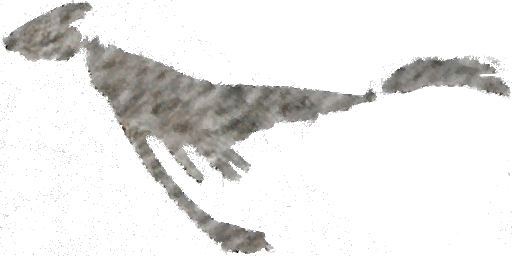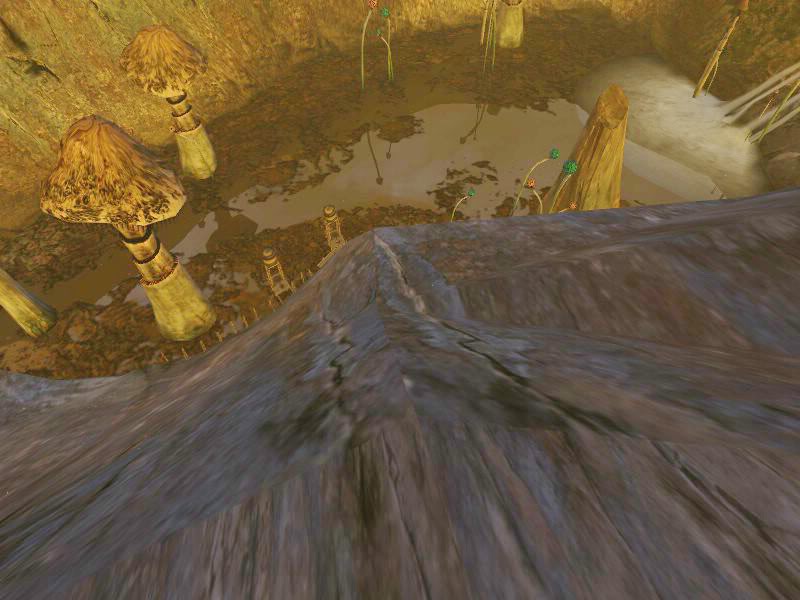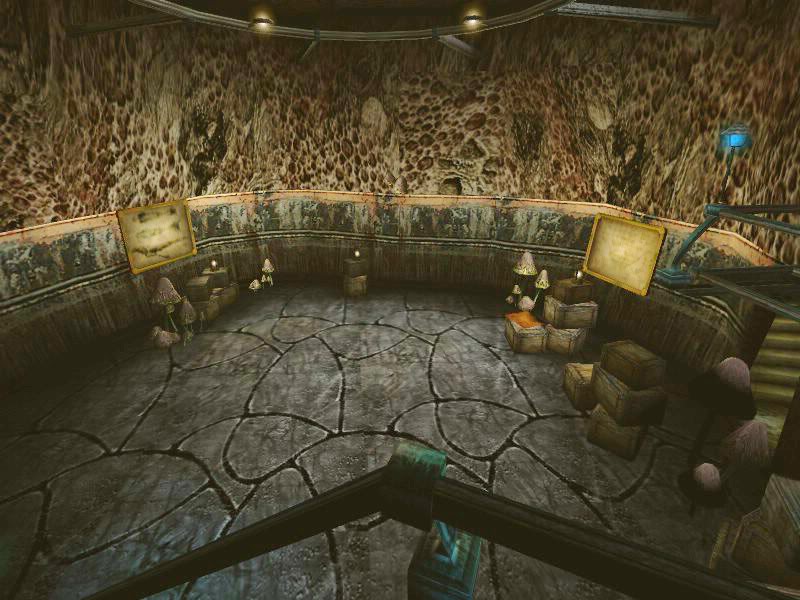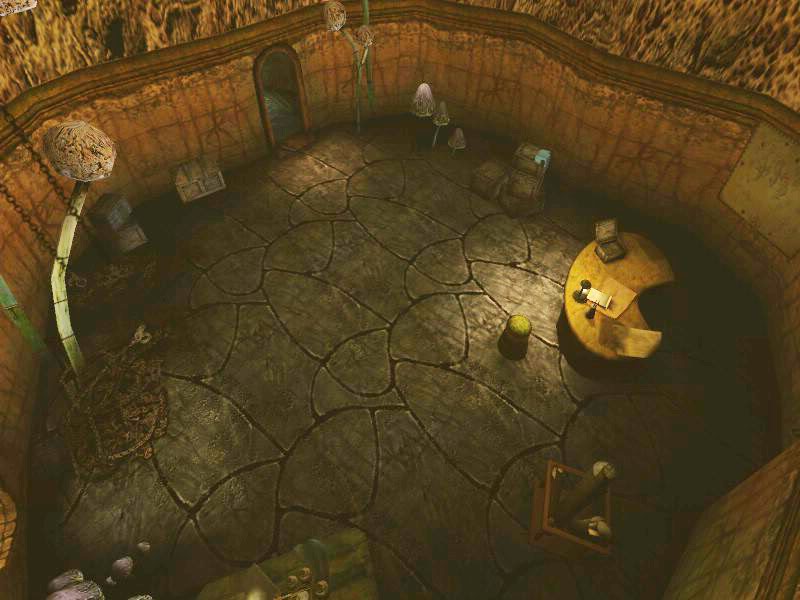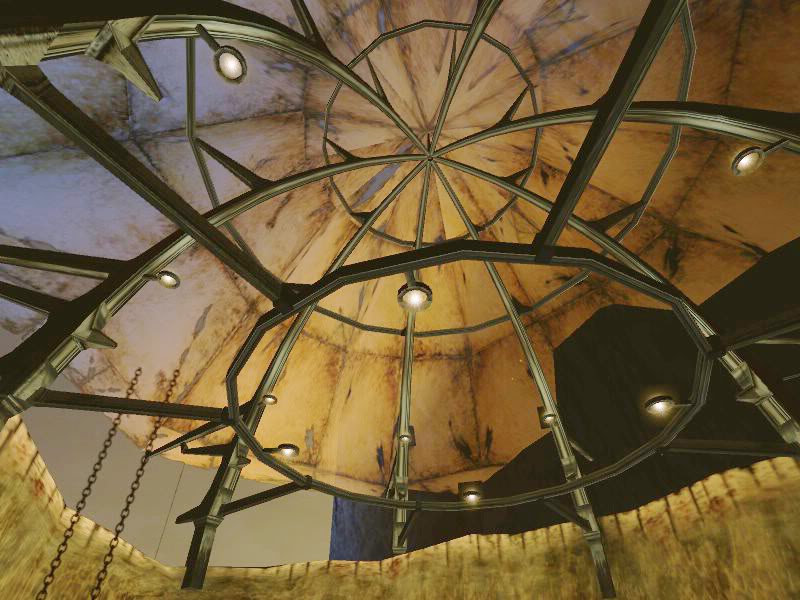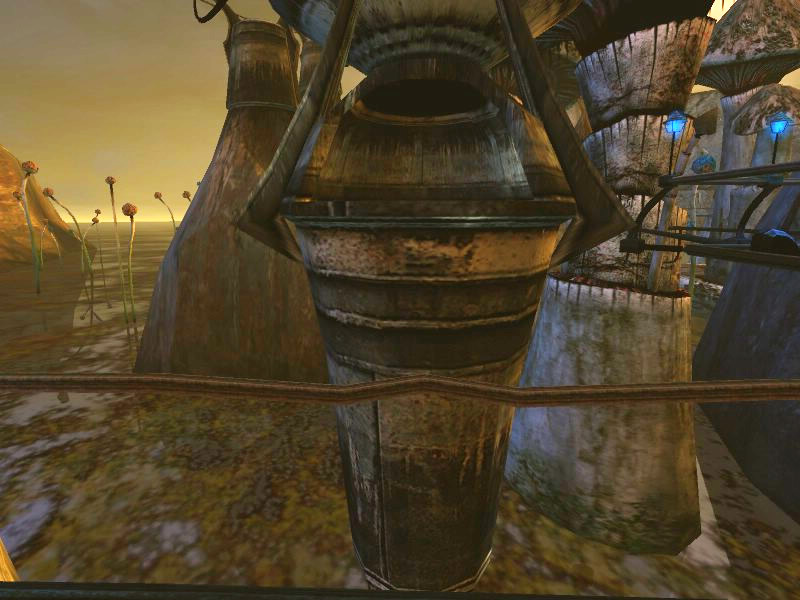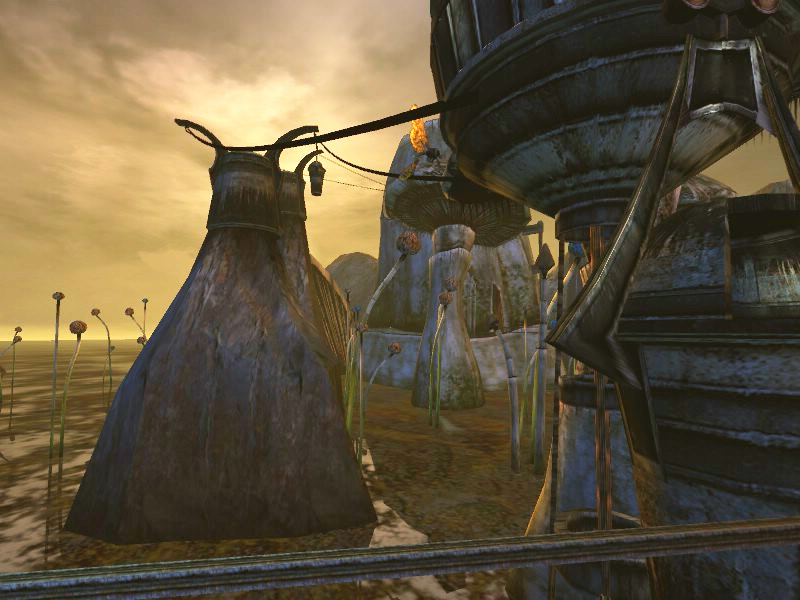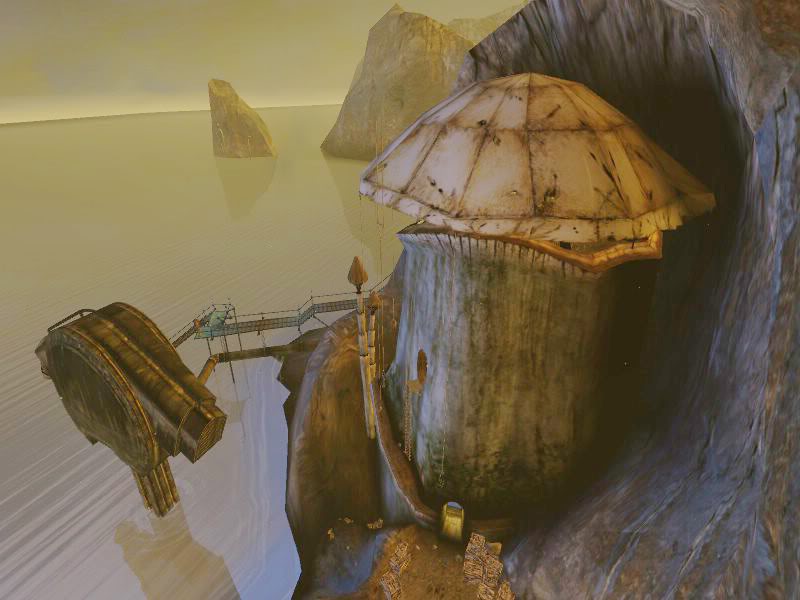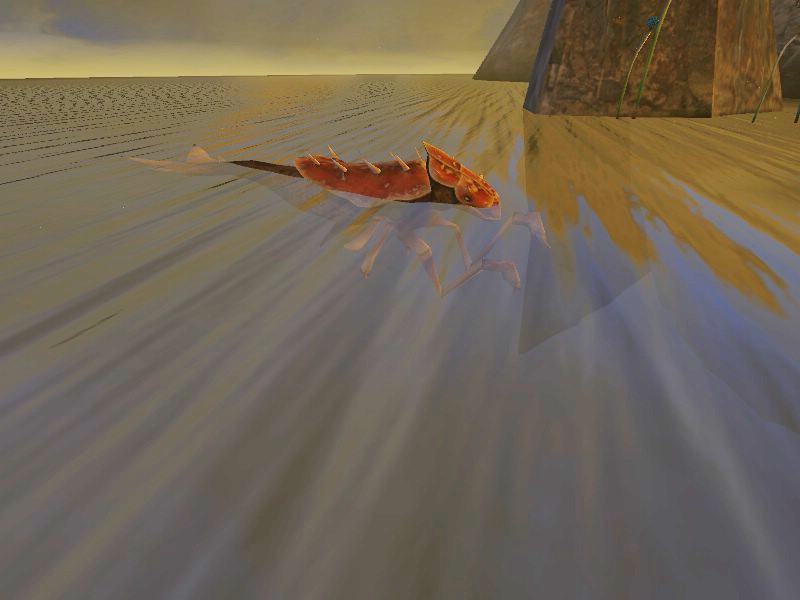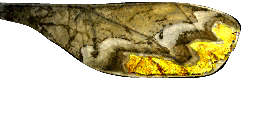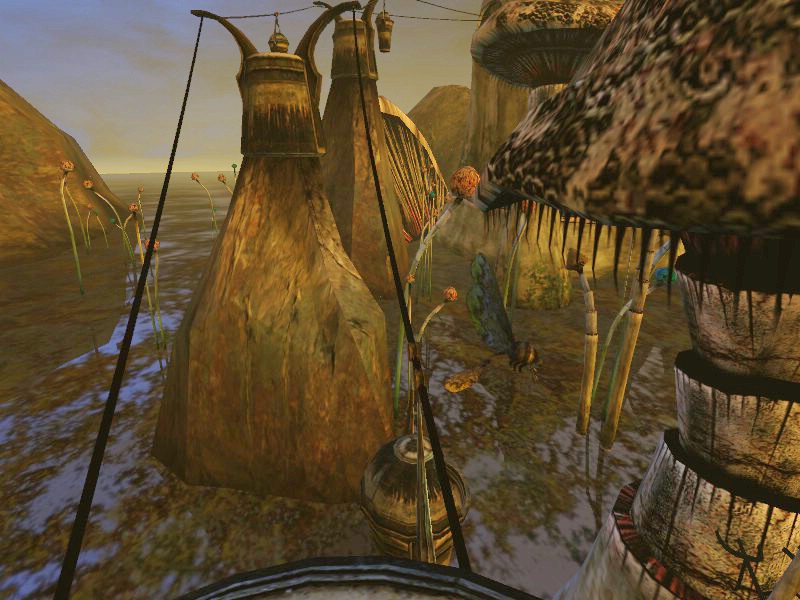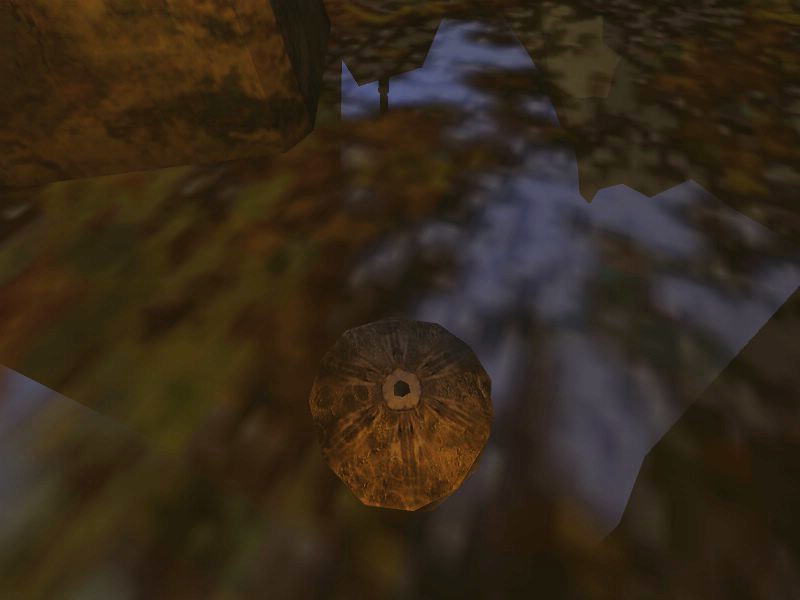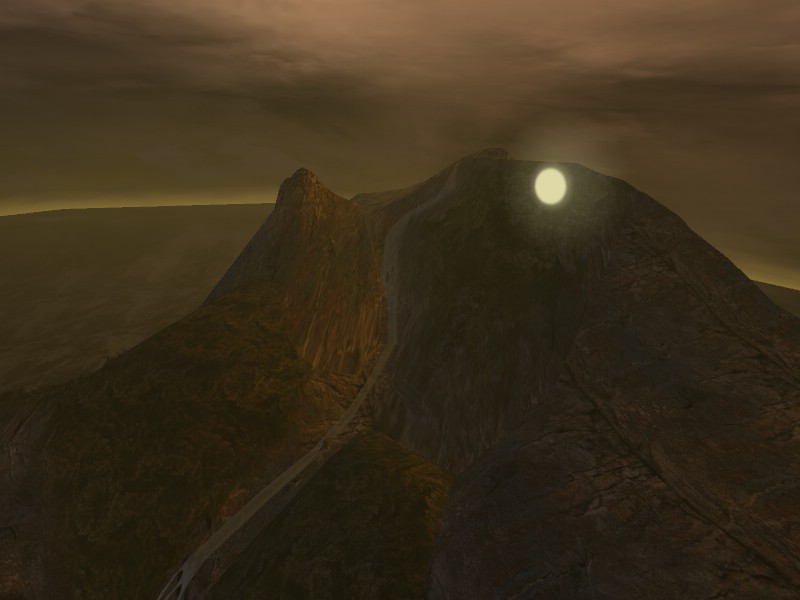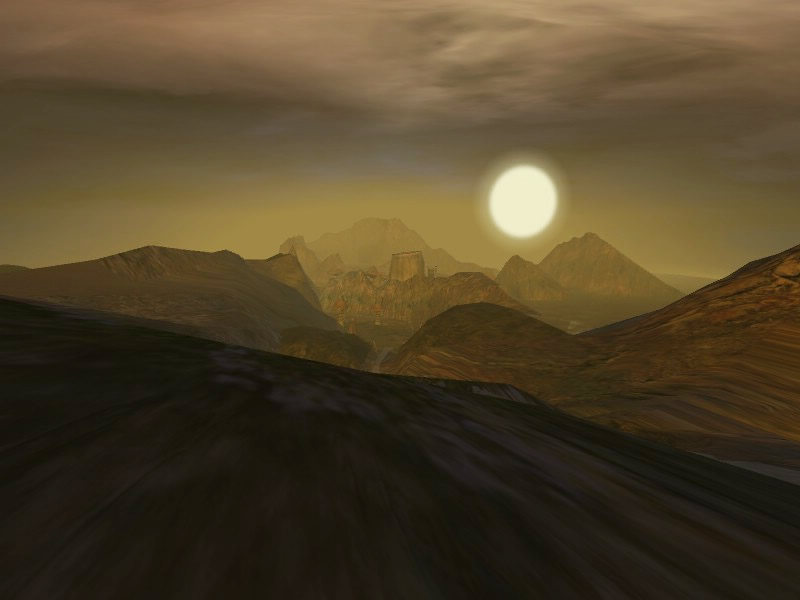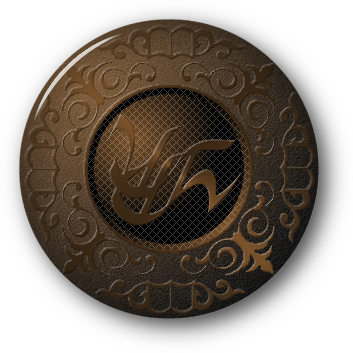

|
|
Teledahn and Yeesha: Teledahn is one of the five Ages chosen by Yeesha to be part of her Path of the Hand journey. She chose it because of its history just before the Fall of D'ni. Yeesha left a book in Relto that contained quotes from regeltav okh ūrpa, which means the Prophesies of Ūrpa. She chose the quotes from Ūrpa to set a tone for the Ages she was sending explorers to visit. The quote she chose for Teledahn was Book 9, Entry 221, Item 29.
When an explorer completed the journey in Teledahn, he or she was greeted in the Rudenna Bahro cave with this speech.
There are no available texts to tell us who Vatuke the Ager was or what he did, but we do have access to information about King Asemlef via a DRC notebook. The passage that Yeesha was referring to in her speech was this.
It's important to pay attention to the words chosen in the notebook. The arotantē (outsiders) mentioned in the notebook are called "servants" instead of slaves. That means they were hired to serve, and were not slaves as Yeesha implied. They had at least some degree of choice in what they did. This is a clue about how Yeesha spoke about Teledahn, and that clue points to deliberate and sweeping falsehoods. She lied with almost every word she spoke about the Age. Was she a bad person for that? Not really. Yeesha was on a self-imposed mission to free the Bahro from captivity. Lying was one of the few tools she had available to accomplish that mission, and it was a tool she used frequently because she had to convince people she didn't know and would never meet to do what she needed them to do. Yeesha made changes to the Age when she decided to use it for her quests, and this can be seen by her personal monogram, which can be found in a few places. She always stamped it in the Ages she modified. Restoration: Teledahn was restored by Douglas Sharper, a contractor hired by the DRC. He was never a member of the council. He was assigned to the Age on November 14, 1997 as a reward for having discovered the first linking book to the Age. On March 3, 1998, Sharper was also the first modern person to see the giant arthropod that hangs around Teledhan, and it was he who named her Shroomie, apparently because of her fondness for one type of the giant mushrooms in the lagoon. The name first appears in his journal entry of October 1, 1998. The Age: Teledahn is a compound word made out of three longer words, to elemartē nadanets. It translates as "place of mushroom spores". The Age is located in an archipelago. There are thirteen medium to large sized islands in the group, as well as a number of small islands or large rocks that break the surface of the sea. The area of Teledahn accessible by explorers is made up of the two largest islands in the group. Between the islands is a lagoon with several varieties of mushrooms growing in or around it. The northern end of the lagoon opens into a bay with clear water that holds a dock, which I refer to as the harbor. The southern end of the lagoon opens into a bay that appears to be filled with a dense matting of plants that remind me of Sargasso seaweed. There is a map of the Age in the harbor office. From what can be seen on it, there seems to have been seven mushroom harvesting areas. Six are highlighted in pale green, and one is highlighted in pale red. Broken red lines lead from the red highlighted area to the green ones, which may mean that it was the headquarters of the operation and the place where spores were shipped to for processing and transport back to D'ni. DRC notes indicate that at least one other area of Teledahn was intended to be opened to access, but the work stopped when Douglas Sharper came into conflict with the organization. The proposed new area was called Teledahn II. In the lower right corner of the map, there is an island with a drawing of a maintainer heavy environmental armor next to it, a dot on it, and broken-lined concentric circles radiating out from it. Also near the island is a drawing of a rock tower that seems to be the nest of a flying creature.On the right and lower left of the map are drawings of creatures that seem to be much larger than Shroomie, whose species is shown in at least four places on the map. Both are shown as having predatory characteristics, and would explain why Shroomie's kind have such heavy armor and spiked defenses. Shown in two areas are towering objects that could be buildings. You can click on the map below to see a larger version of it. The History: Teledahn was written in DE 8990 (AD 1334) for the 250th birthday of Lord Hinash, Grandmaster of the Guild of Caterers, by his friend Grandmaster Mararon of the Guild of Writers. It was intended to be an eder Age (eder is D'ni for "rest", and often refers to Ages made specifically to offer a change of pace away from the Caverns), but Hinash didn't really like it and spent very little time there. However, he collected samples of the plant life and conducted cooking experiments. He found that spores of one of the species of giant mushrooms were not only edible, but were quite tasty, and developed a recipe for flavored bread which became popular among the D'ni elite. The bread was never plentiful due to the small size of the Age and the fact that the spores were hand-harvested, which meant that it was an expensive luxury product. After the death of Hinash in DE 9005 (AD 1349), Teledahn passed into ownership of the Guild of Caterers, and a decision was made to industrialize the spore harvesting to produce the bread in quantity and make the Age profitable. Command of the operation was given to a Guild Captain named Ventus. The decision was a mistake because there were never very many of the giant mushrooms, and organized harvesting led to the exhaustion of the available supply of the spores in a fairly short time. Rather than wait for the mushrooms to recover and resume production on a smaller scale, the Guild put the Age up for auction. It remained unpopular and had no buyer. Rumor has it that the Descriptive Book was once found abandoned in a trash heap. Later, in DE 9396 (AD 1740) Teledahn somehow fell into the hands of a man named Manesmo, who announced that he would reinstate the spore harvesting operation on a smaller scale. He was lying. Instead, he was actually using the spore harvesting work as a front for an illegal slave trading operation that funneled nonhuman slaves to the Age of Rebek. He never actually produced much in the way of spore exports, and rumors of his real operation reached the Council of D'ni. They ordered the Guild of Maintainers to conduct an investigation, but the Maintainers had not yet cracked the case when the Fall of D'ni put an end to the investigation, the slave trade, and the government and people of D'ni. This picture was taken from the top of the giant mushroom stalk that the processing plant is built in. It's a view toward the south end of the lagoon, and clearly visible is the seaweed that fills the water. At the bottom of the frame is the cap of the mushroom I'm standing on, which fell into the lagoon and is resting half-submerged in the lagoon.
Walking over to the other side of the tower roof, this picture shows most of the lagoon and the gate at its northern end. Also visible is the island on the other side of the lagoon, which appears to be an extinct volcano.
This is the westward view from the stalk, looking down into the part of the Age that was intended to be Lord Hinash's vacation area. There is a spring-fed stream flowing down a mountain into a waterfall, and empties into a cove that is connected to the lagoon at its northern end. Visible in the lower right is the broken wooden walkway known as the dock.
This is a view taken in the cinder cone of the second island. It's easy to see signs of volcanic activity on the island.
The machinery: Central to the Age is a collection of machines installed during the height of spore collection, and powered by the orbiting energy disk. The energy emitted is collected by an antenna on a tower, which in turn drives a motor in the base. The motor turns gears that turn drive shafts, and there are three drive shafts leading off from the tower assembly. The first drive shaft leads to a gate mechanism installed across the northern entrance of the lagoon. This was installed to block the path used by giant arthropod creatures native to the Age. It apparently was not necessary to install a gate at the other entrance to the lagoon, possibly because the arthropods were unable to swim through the seaweed sea that covers that end.
These two pictures show the barricade closed and open:
The second drive shaft leads to a mushroom that was the last being harvested. It links to a work platform and powers a winching mechanism for a bucket hoist. Looking around, you will notice that the mushrooms have the remains of canopies spread around their lower stems. These were installed to catch spores that fell before the workers could harvest them.
The last drive shaft links to the central tower, which holds the water tank, hut room, control room, and the supervisor's office. This shaft turns a generator for the electrical power needed to operate the lights, elevator, and other devices in the tower, including the aerial transfer buckets.
The central tower: The offices of the Age all have one thing in common. They were all carved into the remains of dead giant mushrooms. The central tower is a particularly large mushroom stem with its cap laying half-submerged in the water next to it. The tower is comprised of four primary levels. These pictures show the round windows in the control room, from the outside and from the inside. The pole you see is the drive shaft that turns the electric generator inside the tower. The windows have telescopes, and would have been used by the personnel in the room to monitor the workers outside.
Level 4, The tower office: Located above the control room is the supervisor's office. This office would have been Guild Captain Ventus headquarters when visiting this area, and later would have served as the public office of Manesmo. During the restoration, it was used by Douglas Sharper when he was in the Age. It features a desk with various papers and drawings on it, windows overlooking the Age, a fish tank containing a miniature Teledahn landscape, a Nexus book, and a hidden Linking Book to the Baron's Office in Ae'gura. The Baron's Office in turn has a linking book directly to the supervisor's office. The lamps and the rug in the middle of the floor have the same design. It's a D'ni compass rose. There are four monograms on them that are made of the words for the four cardinal diretions: rema (north); vamo (east); tēma (south); and sāra (west). Notice that when the window shutters are raised or lowered, the lamps move with them. The lamps serve as counterweights for the shutters. The Safe Haven fish tank was made by a company named Fry Man Aquatics and Supply, whose name was changed to Fishure Tanks in 2002. The tanks are still available through http://www.fishure.biz. There is a telescope in the office that has a view of the ridge the “sun” passes in front of, and if you watch, you can see the radiant part of the disc pass with the ridge clearly behind it. The view also has a clear shot of a spring-fed stream winding down the slope into a small waterfall. The Wooden Dock is not far from the waterfall. The office walls are decorated with elaborate traceries carved into them.
Level 3, The tower control room: The third level of the tower, above the pumping tank room, the hut room, and below the office. The control room is where the transfer buckets pass through and drop their cargo of spores. There is a control panel for the tower which opens the hatch to the pumping tank, drains the tank, turns on the lights, and controls the transfer buckets.
This is the pit under the large fan platform the spores were dumped onto. The spores were sucked down by the fan, and forced into the two pipes you see here, which are connected to the shaft in the middle. The shaft is where the fan blew the spores.
A worker sat at this control panel and monitored the operations in the tower. He could operate the buckets, let water into the tank, drain water that had enough spores, and other tasks. The workers down in the lagoon could also operate the buckets. Note the D'ni insignia for the production facility in the lower right corner of the panel. It's repeated on the outside and inside of the gate the buckets pass through, as well as on the buckets themselves.
Here's an enhanced version of the insignia, which DRC notations call the "baker company logo". It consists of three mushroom shapes in the upper half of a circle which has three circles spaced around the circumference. In the lower half of the circle is a monogram that spells out "teledan" ( teleDan ).
Level 2, The hut room: The primary link-in area for Teledahn. It is located on the second level of the central tower. The hut itself is used for storage, and has a hatch covering ladders down to the pumping tank. The hut is suspended on walkways in a bowl-shaped area normally filled with water. The spores blown through pipes from the control room drifted down into the water and mixed into it.
The hut room with the water drained, making the water basin visible.
Level 1, The pumping tank: A fairly large cylindrical tank below the hut room, normally submerged well below the hut room's waterline. It has an intake hole in the ceiling, a fill pipe on one side of the wall, and a drain in the floor. A ladder leads up to the metal bowl at the base of the hut room through the intake hole. This is the drain at the base of the tank, down which water laden with spores would be pumped.
This large diameter pipe was used to bring in fresh water to fill the tank and basin. It travels under the lagoon to an area not far from the waterfall.
The intake tunnel: The water intake tunnel leading from the pumping chamber to the slave cage has four patterns of graffiti scratched into the inside surface. Two of the glyphs are reasonably easy to understand, but the first and fourth, which are both the same, are not. For an explanation of that glyph, we turn to the work of the Bahroglyph Study Group. The Bahroglyph Study Group, a subdivision of the D'ni Linguistic Fellowship, was a group of explorers who had a common interest in interpreting the various pictographs found scattered around the D'ni Empire, most of which were inscribed by the Bahro and often to serve Yeesha's purposes. However, the group had flaws; they apparently went into their studies with a number of preconceptions in mind, and ignored anything that contradicted them. Some of the preconceptions seem to have been: Yeesha always told the truth. The Bahro inscribed every pictograph found in the D'ni Empire. All elements of a pictograph must have a meaning. The meaning of even simple elements must be deep and / or complex. This resulted in them often overanalyzing pictographs and sometimes drawing erroneous conclusions about them. It also resulted in them always interpreting the pictographs in ways that supported Yeesha's ideology. As an example of this, let's use the Mourning Eye. The Mourning Eye is a symbol the Bahro frequently drew either near or on their images of themselves. The symbol shows an open eye with three lines dropping from beneath it, and is obviously meant as a self-identification of their people. The three lines probably represent tear tracks, and overall the symbol could indicate sadness or despair. One of the founders of both the D'ni Language Fellowship and the Bahroglyph Study Group, Domahreh, wrote this about it.
The fact that Domahreh wrote all of that about what is, in the end, a simple drawing of an eye with three lines below it shows how fanciful the group could be in how they analyzed what they observed. There is no evidence or documentation to back up his conclusions. He let his imagination run wild, and the group took it seriously. Because of this, the groups methods and conclusions cannot be regarded as scientific or unbiased, and should be viewed with a touch of skepticism. On the other hand, they put a great deal of effort into noting and discussing every possible detail of the glyphs, and produced some very good observations. By no means should their work be discounted. It forms a very good basis for further research.
This is a fairly well thought out analysis of the symbol, although not entirely accurate because Deius forgot that there are five Ages in the Path of the Hand, one for each finger. It's also a little fanciful, but not nearly as much as Domareh's analysis of the Mourning Eye.
The two copies of the Spiral Cross surround the two non-Bahro pictographs. Why that was done is unknown. As a guess, it may have been a symbolic attempt to claim ownership of the older pictures. The prison cell: This is a natural cave located in the main island. While the Guild of Caterers probably used it as an access to inspect the intake pipe, Manesmo used it to hold slaves bound for blood sports in the Age of Rebek. One of the mysteries of the room is the pressure plates in the cell itself that operate the doors in concert with the switches on the wall in the antechamber. There seems to be no reasonable explanation as to why the D'ni slave traders would want to have such a feature in a cage where they were keeping slaves. Because of that, it's more likely that the pressure plates were added to the Age by Yeesha; only she would have wanted the occupants of the cage to be able to open it from the inside. This is made all the more likely by the presence of Yeesha's monogram on the floor of the cell. She often left it somewhere in the Ages she modified. Yeesha claimed in her Teledahn speech that "the least" were kept in the cage, implying that the prisoners were Bahro. That was a lie. Firstly, as she pointed out in that same speech, the Bahro could link at will without need for books. Bars would have been no obstacle to them. Secondly, the prisoners of Teledahn were shown to be physically different from the Bahro both in their own drawing in the tunnel, as well as in Bahroglyphs in Eder Kemo. Lastly, we know that the prisoners kept there weren't Bahro because Nick White, who worked with Douglas Sharper as a translator, once was visiting with explorers in D'ni and told them outright that the bones were not the remains of Bahro. The bones there belong to at least one of the unfortunate slaves that were trapped when the Age was abandoned. There is also a human skull there that may have been either a human captive or a slaver who died when the Age became infected during the Fall of D'ni.
The wooden dock: The dock is a broken walkway farther up the pond from the exit of the slave caves. Its only notable feature are a pair of broken feeding machines. It is not accessible normally, but there is a Bahro Stone that links to it. The wooden walkways were probably part of the Age as originally written, and the dock was most likely part of a long walkway to view the waterfall.
The stump: A mushroom stump is accessible through a Bahro stone in the Baron's Office. It has a view of the seaweed infested sea on one side and the lagoon on the other. The bay-side office and the warehouse: These are two rooms on the main island in a mushroom stem next to a plateau. The lower room was used as a warehouse by Sharper and the DRC. The upper room was used by Manesmo for the slave trade as a secret meeting room, and was accessed by a hidden door. Slaves would be chained there for inspection by prospective buyers. This is the warehouse. There are several charts and papers here, most of which are duplicated in the Baron's City Office.
Manesmo's secret office.
The manacles in the office.
This stem was open to the sky at the top, so an artificial cap was constructed out of fabric on a metal framework to ward off the weather. Because of the balmy climate, this was considered sufficient protection. The frame supporting the fabric roof.
The spore harvesting operation: When Guild Captain Ventus tried to industrialize the Age, he set up a process to make gathering the spores more efficient, and succeeded all too well. His team harvested so many spores so quickly that the business collapsed when they ran out of product. First, a work platform was build just below the cap of a mushroom, anchored to the stem. A drive shaft was run out to the mushroom to power a hoist. Workers would then fill a hoist bucket with spores gathered from the bottom of the mushroom cap. The hoist bucket:
The hoist was powered mechanically. The drive shaft turned a gear that turned a ring built into the circumference of the work platform. The ring turned a gear attached to a drum that wound and unwound the rope of the hoist bucket:
The work platform.
The hoist bucket was lowered to other workers, who would dump the spores into the transfer buckets to be carried to and emptied in the tower control room. The spores landed on a grating with a fan below it, and the fan would spin up to draw the spores and blow them into a series of pipes that led down to the hut room's ceiling. The spores fell into the room, and drifted down to the water below the hut.
When there were enough spores in the water, the giant separator in the bay (which has been nicknamed the “Giant Hairdryer” due to its appearance) would filter the spore-laden water. The spores were routed out the short tube near the dock and dumped into a transport boat which was tied to the dock next to the pump. The water came out the side nearest the land and fell into the bay. The bay-side area, including the tower with its fabric cap, the "Hairdryer", and the dock with the feeder and air cannon. Note the pipe from the central tower pumping tank emerging from underground and terminating in the "Hairdryer" separator.
Wildlife: Much of the life in Teledahn is difficult to see, but easily heard. There are crickets, frogs, and other small creatures busily making enough noise to wake the dead. However, they conceal themselves carefully because there are aerial predators constantly on the prowl. There is a species of giant arthropod that somewhat resembles an oversized lobster in the seas of Teledahn. At least one of them has a territory around the islands, and supplements its diet with two of its favorite snacks: flappers and mushrooms. Douglas Sharper spotted one and dubbed it "Shroomie". The arthropods were a problem for the Guild of Caterers, since they eat the mushrooms from which the Guild was harvesting spores. This caused the Guild to block off the entrance of the lagoon they used to get to the mushrooms.
The predator that seems to keep the smaller animals in hiding were dubbed "buggaro" by Sharper. It was a cobbling together of the English word "bug" and the D'ni word "gahro", meaning "big". The buggaro have four wings and a tail, as well as six short legs below the main body, which does not seem to have separate segments like Earth insects do. The wings and tail have metallic gold colored edging.
These odd creatures are spore eaters called flappers. They leap high in the air by means of a violent contraction of radial muscles, and then catch floating spores on their way down.
The Teledahn map in the harbor office shows that there are at least three other major animal species in the Age. Two are predatory sea creatures. One has tentacles, some of which seem to branch partway along their length. This creature is truly gigantic judging by the size of the Shroomie type animals drawn nearby, and has a huge round mouth lined with spiked teeth. The second seems to be a giant fish, three or four times the length of Shroomie. The last type of animal shown on the map are giant two-winged insects that construct towering cylindrical nests that have some resemblance to termite mounds. These animals are either very rare, or tend to stay away from the islands where the D'ni operated, since no explorer has ever seen one of them. The controversy over the "sun" of Teledahn: There are almost as many ideas about the nature of Teledahn's "sun" as there are explorers. One person proposed that the planet rotates on its side, with the area accessible to explorers being located at the pole that points toward the sun. It is a logical idea if you base it on simple observation, because Teledahn's supposed day is about 65 seconds long, and the object interpreted as a sun never sets. Instead, it appears to rotate around the Age a few degrees up from the horizon. However, this theory is probably wrong, because it ignores all other evidence to be found in the Age. This is a fault that can be found in most of the theories you'll hear proposed about Teledahn's "sun". Many are well thought out. Many more are not. What they all have in common is that few of the ideas ever have any material proof to back them up, and most can be classed as opinions at best. However, the people who propose them are passionate about their ideas. This means that it's unlikely there will ever be an agreement about the subject, since the DRC stays silent about it. There is a map of the Age in the harbor office which does offer some clues. It's a rather unusual projection that seems to only show the Age itself, rather than the entire world. Certainly, the surface shown is too small to be a viable planet since it only shows a small number of islands and not much ocean. On the map, the part explorers can wander in is visible as the two largest islands to the left of the red highlighted area. The map has a number of lines which seem to represent north-south air currents, and a number of red lines connecting the sun markings. While there are no apparent longitude and lattitude lines, there does seem to be a possible line for an equator. There is no sign that the map represents a polar region. Other explorers have gone to the trouble of calculating the rotational speed the planet would have if the object were a real sun traveling across the sky as fast as it does, and the figures are staggering. The conclusion was that the planet would have to spin at a speed that would make life as we know it impossible. I have my own theory, of course, and arguments have arisen about it in the past, and no doubt will again. However, I have evidence for my theory in the form of pictures and simple observations you can perform for yourself. I do not claim that it's the correct or only explanation, just that it's more plausible than the usual speculation without evidence. In a nutshell, my idea is that the object people mistake for a sun is no such thing. It's an energy disk that was written into the Age to provide light, and whose radiation was later used to power the machinery. Given that Earthly mushrooms like darkness, and given the normally thick cloud cover over the Age, it's quite possible that planet has very low light levels naturally. To support my theory, I have collected photographic evidence that the object is not a real sun. The energy disk's path is actually very low in the atmosphere and its orbit is a rather small circle around the lagoon. At one point, it passes in front of a mountain on the main island. This version of the Teledahn map shows the approximate path of the energy disk, although it's not precise. There are two ways you can check my theory yourself. First, you can stand on the dock where the Relto page is found, on the mushroom stalk linked to by Bahro stones, or many other places in the Age, and watch the disk pass by. If you pay attention, it's easy to see that the disk is moving below the cloud layer. Another test is to look through the telescope in Sharper's office at the path of the disk and notice that it passes in front of the mountain with the stream of water flowing down the side. Here's a picture taken from the air, showing the disk's low height above ground more clearly.
I climbed up the mountain, and got a picture that I doubt anyone else has ever claimed to have taken — the back side of a "sun". You can see the large mushroom stalk that houses Sharper's office in the distance.
|
Myst, the Myst logo, and all games and books in the Myst series are registered trademarks and copyrights of Cyan Worlds, Inc. Myst Online: Uru Live is the sole property of Cyan Worlds Inc. The concepts, settings, characters, art, and situations of the Myst series of games and books are copyright Cyan Worlds, Inc. with all rights reserved. I make no claims to any such rights or to the intellectual properties of Cyan Worlds; nor do I intend to profit financially from their work. This web site is a fan work, and is meant solely for the amusement of myself and other fans of the Myst series of games and books. |
